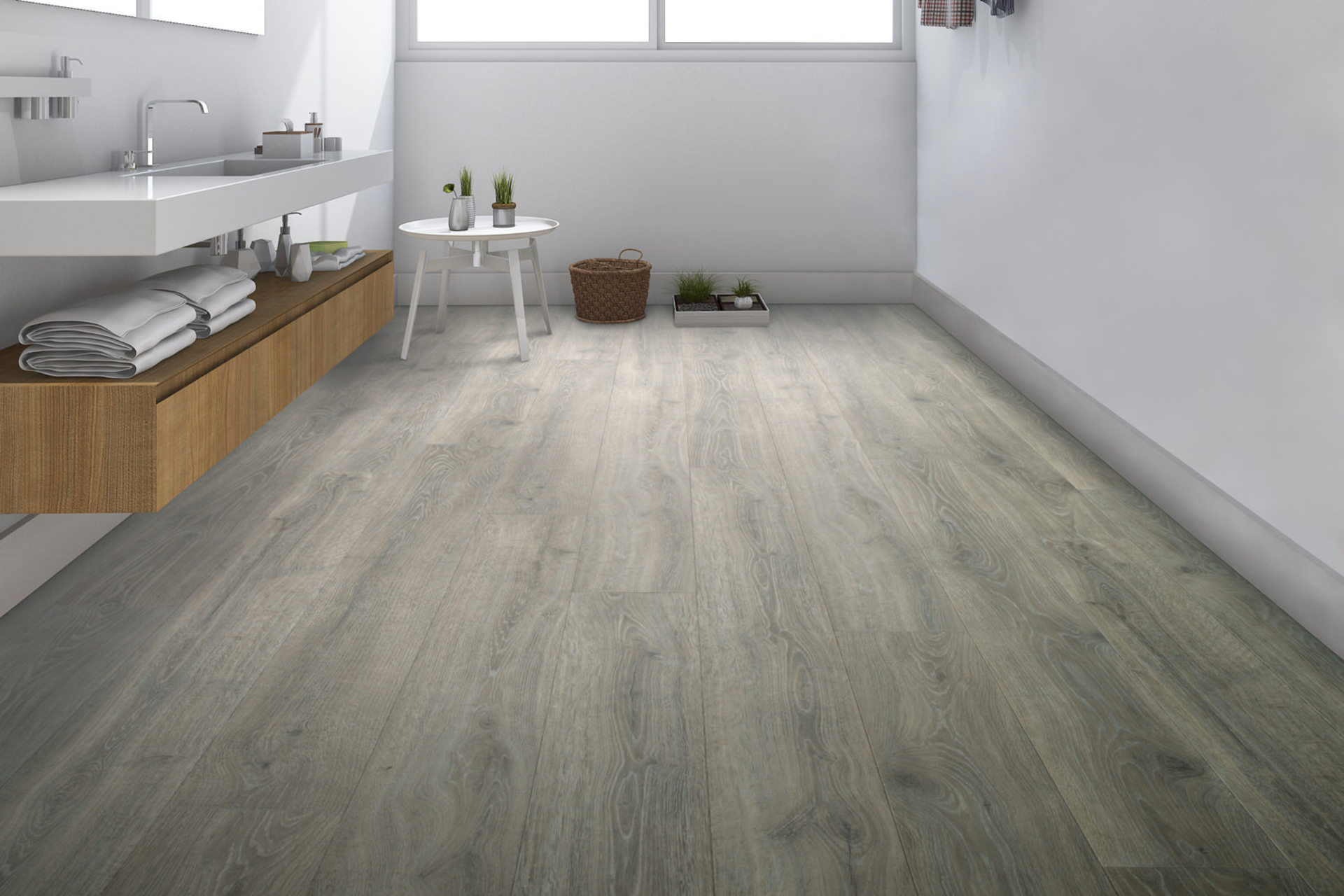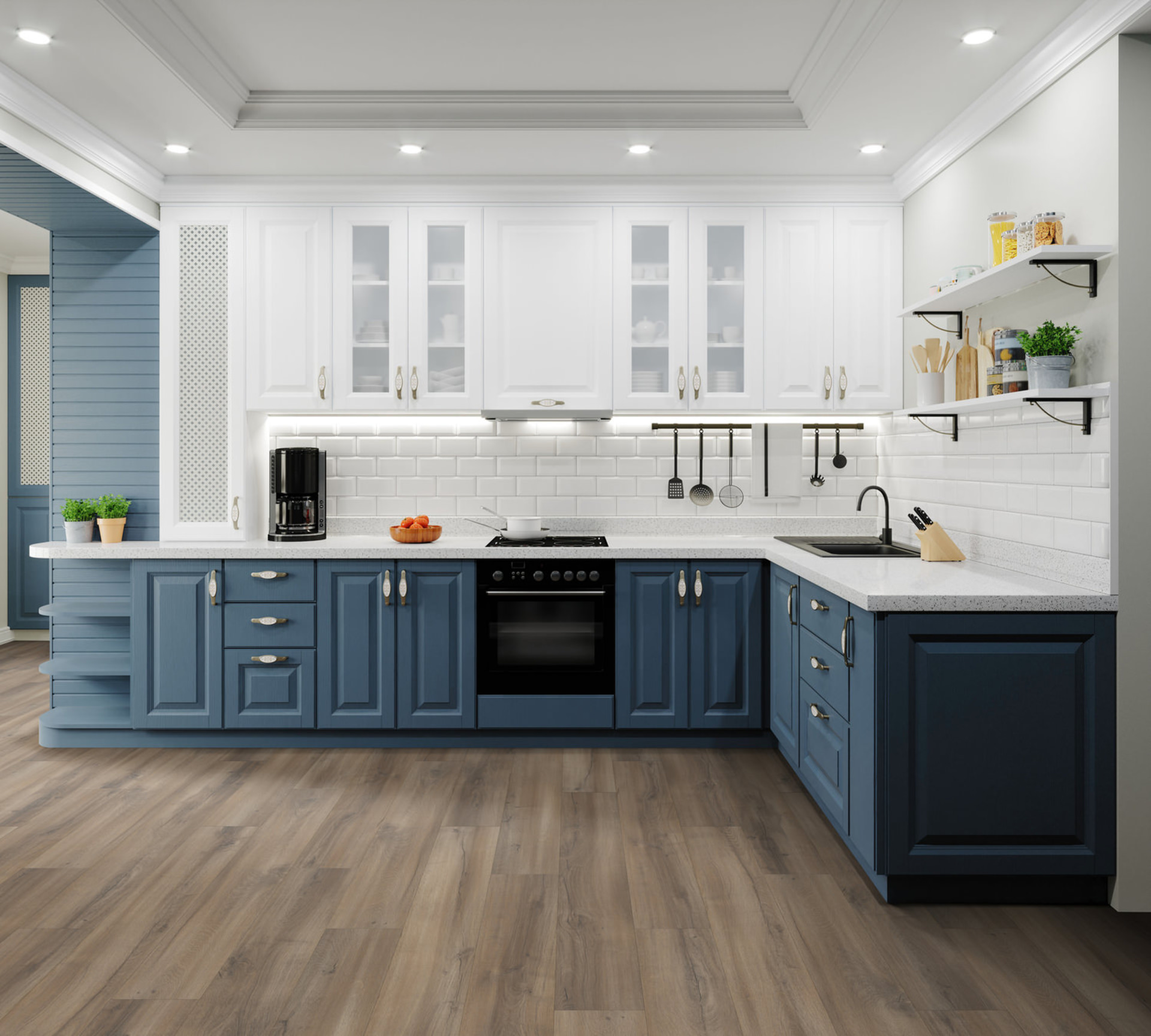Laminate Flooring Buying Guide

You want the perfect flooring for your home, one that not only looks great but also stands up to daily usage over the long haul. If you're considering new flooring, laminate deserves a serious look. Over the past 50 years, it has transformed from merely a budget-minded option into a stylish, high-performing flooring choice that competes with any hard surface for attractive looks and durability. Here’s what you should know about different types of laminate flooring, from construction and benefits to current trends and maintenance tips.
What Is Laminate Flooring?
Laminate flooring was the first widely used alternative to hardwood, offering a wood-look surface at a lower price. It’s a layered flooring product made of high-density fiberboard (HDF), a photographic image layer that replicates wood, and a protective wear layer that enhances durability. Thanks to modern advancements, laminate now offers ultra-realistic designs and enhanced performance features.
How Laminate Flooring Is Constructed
Laminate flooring is composed of four main layers:
Wear layer – The wear layer protects the pattern so that it retains its distinctive beauty year after year. It’s often constructed of tough melamine to protect against scratches, dents, scuffs and stains, so that it keeps your floors looking newer for longer.
Design layer – This high-resolution image replicates the look of real hardwood. Modern printing techniques make it nearly indistinguishable from natural materials, offering stunning visual depth and character.
Core layer – Made from high-density fiberboard (HDF), the core provides strength, stability, and resistance to impact. This layer ensures the flooring holds up to daily foot traffic and maintains its shape over time.
Backing layer – A moisture-resistant backing that helps prevent warping and protects the core from damage. This layer adds structural integrity and enhances overall durability.

Advantages of Laminate Flooring
When it comes to flooring types, laminate has improved dramatically over the years, making it a versatile and practical choice. Some key benefits include:
Authentic Looks – Today’s laminate flooring offers highly realistic wood visuals, often with embossed textures that mimic the grain and feel of natural materials.
Durability – With a tough wear layer, laminate resists scratches, dents, and fading, making it ideal for high-traffic areas and homes with pets and children.
Easy Maintenance – Unlike hardwood, laminate does not require refinishing or waxing. Regular sweeping and occasional damp mopping keep it looking fresh.
Water-Resistant Options – Many modern laminates offer water resistance, making them suitable for damp areas like entryways and laundry rooms. However, it’s important to avoid excessive moisture exposure, as prolonged water contact can cause damage.
Affordability – Laminate provides the look of hardwood at a lower price point, making it an excellent choice for budget-conscious homeowners who still want stylish flooring.
Limitations of Laminate Flooring
While laminate is an excellent choice for many homes, it has a few drawbacks:
Not 100% Waterproof – Standard laminate is water-resistant but not fully waterproof. Spills should be wiped up quickly to prevent damage, and it may not be the best choice for areas prone to standing water, such as bathrooms.
Can’t Be Refinished – Unlike hardwood, laminate cannot be sanded and refinished if it gets scratched or worn. Planks that have been damaged must be replaced.
Sound and Feel – Some laminates can sound hollow underfoot without proper underlayment. Choosing a high-quality underlayment can help improve the acoustic performance and comfort of your floor.

How to Choose Laminate Flooring
To select the right laminate flooring types, here are some factors you’ll need to evaluate.
Abrasion Class (AC) Rating – This scale measures durability from AC1 (light residential use) to AC5 (commercial use). You’ll need to think about where you’ll install your laminate floor. For most homes, AC1 should be used only in the lightest traffic areas. AC2 or AC3 is sufficient for bedrooms and moderate traffic, while AC4 might be desirable for busy households with kids and pets. Commercial spaces typically require AC4 or AC5 for long-term durability.
Thickness – Laminate flooring typically ranges from 6mm to 12mm thick. Thicker planks provide better sound absorption and reduce echoing. They more closely resemble a solid wood feel underfoot, and they are better able to mask subfloor imperfections. They can also support more detailed etching on some of the distressed wood-look planks.
Residential vs. Commercial Use – Consider the space where the flooring will be installed. In homes, higher AC-rated and thicker laminates are ideal for high-traffic areas like hallways and living rooms, while lower-rated options can work well in bedrooms or low-traffic spaces. Commercial spaces almost always required a high abrasion rating.
Trends in Laminate Flooring Styles and Aesthetics
Choosing the right style may be the most enjoyable part of selecting laminate flooring. Trends in laminate closely follow overall trends in hard flooring, offering homeowners a wide range of stylish options.
One major trend is longer and wider planks, which create a more seamless, high-end look. These planks make rooms feel larger and provide a more authentic hardwood appearance. Light, natural wood tones like blonde oak and warm maple can still be found, while dark walnut hues are becoming popular for those seeking a bold statement.
Textured surfaces are another big trend. Wire-brushed and hand-scraped finishes add depth and character, making laminate feel even more like natural wood. Matte finishes, rather than high-gloss, are preferred for their modern and sophisticated look. For those wanting something beyond wood, stone-look laminates provide the beauty of marble, slate, and travertine with easier maintenance.
Patterned and mixed-width planks are gaining popularity, allowing homeowners to create unique, custom looks. Alternate tile patterns like chevron and herringbone yield a striking modern look. Whether you prefer the distinctiveness of unique tile layouts or the charm of reclaimed wood styles, today’s laminate options make it easy to achieve the design you love.
Installation Options
One of laminate flooring’s advantages is its straightforward installation process. A skilled DIYer can readily tackle it, although more homeowners prefer professional installation for the best results.
Floating Installation – Most laminate floors use a click-lock system that doesn’t require glue or nails, making installation faster and cleaner, with planks snapping together securely.
Glue-Down Installation – Some laminates can be glued down for extra stability, which may be necessary for commercial applications or areas where extra moisture resistance is needed.
Underlayment Considerations – A quality underlayment can improve sound absorption, provide moisture protection, and enhance comfort underfoot. Some laminate products come with attached underlayment, while others require a separate layer.
Maintenance Do’s and Don’ts
Laminate flooring is durable and easy to care for, but it’s not impervious to pets, children, bumps and spills. While laminate water resistance is getting better all the time, the floors are still not waterproof, and, if they get wet, you shouldn’t let them stay that way. Here are some do’s and don’ts to keep your laminate floors looking and performing their best year after year.
Do:
Sweep or vacuum regularly to remove dust and debris before they cause scratches.
Use a damp (not wet) mop with a laminate-safe cleaner to keep the surface clean without excess moisture.
Place felt pads under furniture legs to prevent scratches and dents.
Use area rugs or mats near outside doors to limit dirt and moisture being tracked in.
Clean up spills immediately to prevent water damage and staining.
If your home tends to be humid, consider using a dehumidifier to keep your levels in a comfortable range and prevent damage from expanding and contracting floors.
Don’t:
Use excessive water or steam mops, which can cause swelling and warping.
Use abrasive cleaners or wax, as they can dull the surface and reduce its lifespan.
Use floor polish.
Drag heavy furniture across the floor without protective pads, as this can leave permanent marks.
The Right Laminate for Your Home
Laminate flooring has come a long way since its introduction, and it offers homeowners an affordable, durable, and stylish alternative to hardwood. With realistic designs, water-resistant options, and advanced durability, it’s a smart choice for nearly any room. Whether you prefer the classic charm of oak or the modern appeal of stone, there’s a laminate style to match your home. Use this guide to help you select the laminate flooring that will make your floors a sturdy and long-lasting enhancement to your interior design.